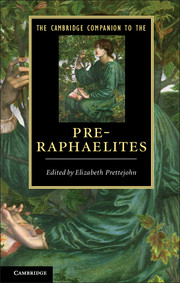1 - The Pre-Raphaelites and literature
from PART ONE - PRE-RAPHAELITISM
Published online by Cambridge University Press: 28 September 2012
Summary
A list of Immortals
Hunt and I have prepared a list of Immortals, forming our creed and to be pasted up in our study for the affixing of all decent fellows' signatures. It has already caused considerable horror among our acquaintance: I suppose we shall have to keep a hairbrush.
At the end of August 1848, at the height of his friendship with William Holman Hunt, and just as Pre-Raphaelite theories were beginning to emerge among a group of artist friends, Dante Gabriel Rossetti wrote about this iconoclast project to his brother, William. The list of ‘Immortals’ was intended to make people's hair stand on end (Dante Gabriel was alluding to the Latin sense of ‘horror’). Hence the need for a hairbrush. The list, on the principle of a Michelin Guide, gave star ratings on a scale of four to none to fifty-seven writers and artists, including Jesus, and a few political figures. ‘The first class consists only of Jesus Christ and Shakespeare’, Rossetti wrote. Hunt, who reproduced the list in his memoir of the Pre-Raphaelites, actually assigns four stars to Jesus (the only figure to receive four) and three to Shakespeare and ‘The Author of Job’. Two-star figures are Homer, Dante, Chaucer, Leonardo da Vinci, Goethe, Keats, Shelley, Alfred (the Saxon king), Landor, Thackeray, Washington and Browning. Boccaccio, Fra Angelico, Elizabeth Barrett Browning, Patmore, Raphael, Longfellow, Tennyson and the ‘Author of Stories after Nature’ (Charles Jeremiah Wells) get one star. Among those who get none are Pheidias, Rienzi, Spenser, Hogarth, Byron, Wordsworth, Michael Angelo, Early English Balladists, Titian, Tintoretto, Cromwell, Poe and Columbus. But their inclusion is intended to signify their importance (see Appendix Two for the complete list).
- Type
- Chapter
- Information
- The Cambridge Companion to the Pre-Raphaelites , pp. 13 - 31Publisher: Cambridge University PressPrint publication year: 2012
- 7
- Cited by



